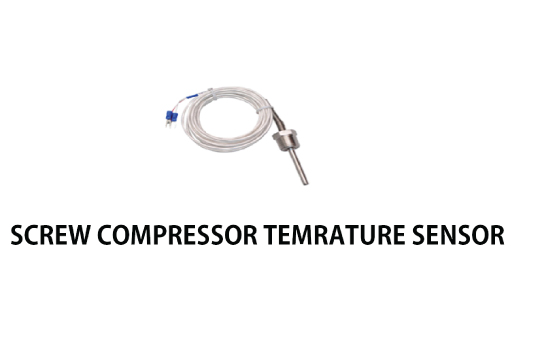-
Call
-
Whatsapp
9825014048
-
Location


Screw Compressor Temperature Sensor
Screw Compressor Temperature Sensor
Screw compressors are essential in diverse industries, turning in a non-stop source of compressed air that powers production procedures, pneumatic tools, HVAC systems, and extra. To maintain these machines walking optimally, it is essential to display their health and performance carefully. One crucial issue in this monitoring process is the screw compressor temperature sensor.
Screw compressor temperature sensors, regularly referred to as temperature probes or transducers, are devices designed to measure and display the temperature within the compressor. These sensors play a important position in making sure the compressor operates within secure temperature stages, stopping overheating, and contributing to the compressor's typical efficiency and toughness.
Temperature Monitoring
Screw compressors generate heat at some point of operation, and tracking this temperature is vital for several reasons:
- Preventing Overheating :Overheating can lead to huge harm to the compressor and result in luxurious downtime. Temperature sensors are the first line of protection towards such troubles.
- Optimizing Efficiency : Operating a compressor inside the right temperature range is crucial for preserving electricity performance. Temperature sensors help keep this balance.
Significance of Screw Compressor Temperature Sensors
Let's delve into the essential roles played by using those temperature sensors in preserving the fitness and overall performance of screw compressors:
- Early Warning System : Overheating can be disastrous for a screw compressor. It can cause the breakdown of lubricants, harm to seals and components, and even catastrophic failure. Temperature sensors assist prevent these troubles by way of ensuring that the compressor remains in the encouraged temperature range.
- Efficiency Optimization :Maintaining the right operating temperature is essential for strength performance. When a compressor operates in the exact temperature variety, it uses much less electricity, lowering working expenses.
Benefits of Screw Compressor Temperature Sensors
- Enhanced Safety: These sensors act as safeguards, stopping the compressor from strolling at unsafe temperatures, that may pose a hearth threat or result in aspect failure.
- Reduced Downtime : By detecting temperature anomalies early, those sensors allow for proactive protection, reducing unscheduled downtime.
- Energy Savings :Operating the compressor in the ideal temperature range ensures power performance, leading to price savings over the years.
Maintaining Screw Compressor Temperature Sensors
For these sensors to function optimally, regular protection is important. Here are a few key steps for their care:
- Inspection : Periodically check out the sensors for signs and symptoms of harm, put on, or malfunction. Early detection of issues lets in for well timed replacements or maintenance.
- Calibration : Calibration is critical to make certain that the sensors offer accurate temperature readings. Follow the manufacturer's recommendations for calibration periods.


FAQ

Frequently Ask Questions
A screw compressor temperature sensor is a device used to measure the temperature of various components within the compressor system, such as the compressor element, discharge line, or oil sump. Its primary function is to monitor temperature levels and provide feedback to the compressor control system. By continuously monitoring temperature, the sensor helps prevent overheating, optimize compressor performance, and ensure safe operation.
The screw compressor temperature sensor plays a crucial role in compressor maintenance and reliability by alerting operators to potential issues related to temperature abnormalities. By detecting overheating or temperature fluctuations, the sensor enables timely intervention and preventive maintenance measures, such as adjusting operating parameters, troubleshooting mechanical issues, or scheduling component inspections. This proactive approach helps prevent compressor breakdowns, minimize downtime, and extend the lifespan of compressor components.
Screw compressor temperature sensors are available in various types, each suited to different temperature measurement requirements and operating conditions. Common types include thermocouples, resistance temperature detectors (RTDs), and thermistors. Thermocouples are rugged and versatile sensors capable of measuring a wide temperature range, while RTDs offer high accuracy and stability over a moderate temperature range. Thermistors, on the other hand, provide fast response times and are often used in applications where rapid temperature changes need to be monitored.

